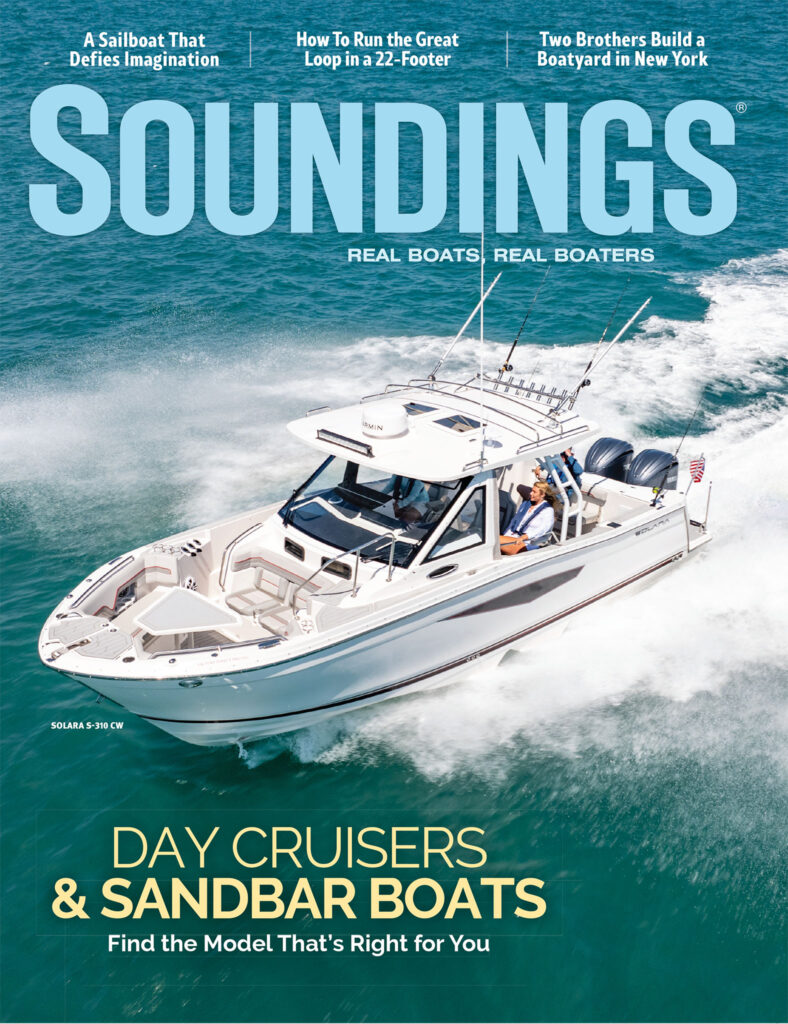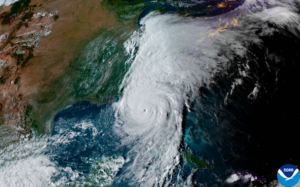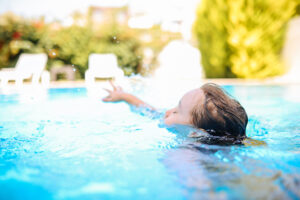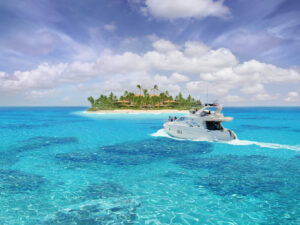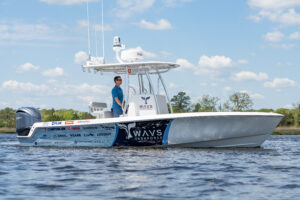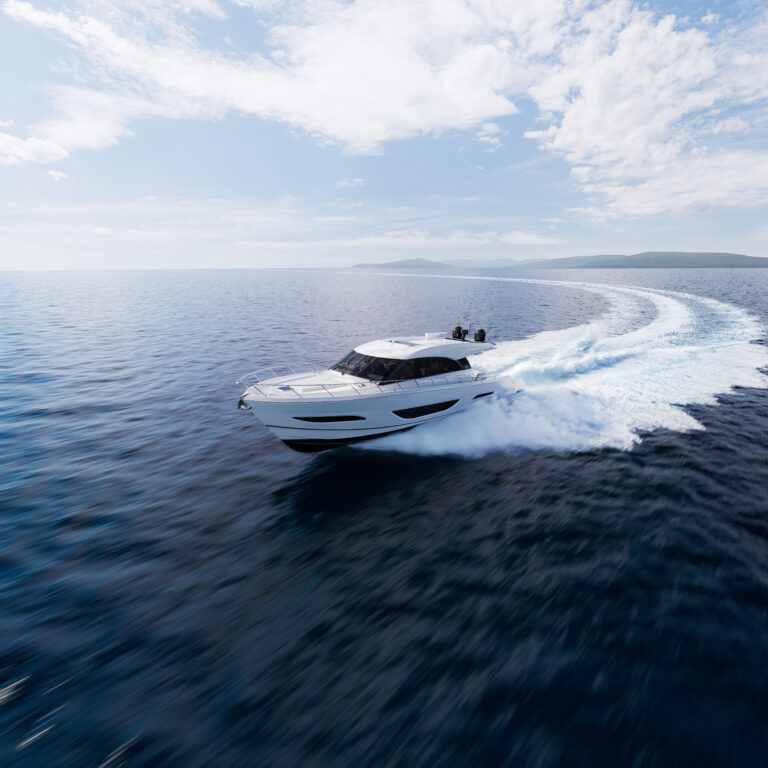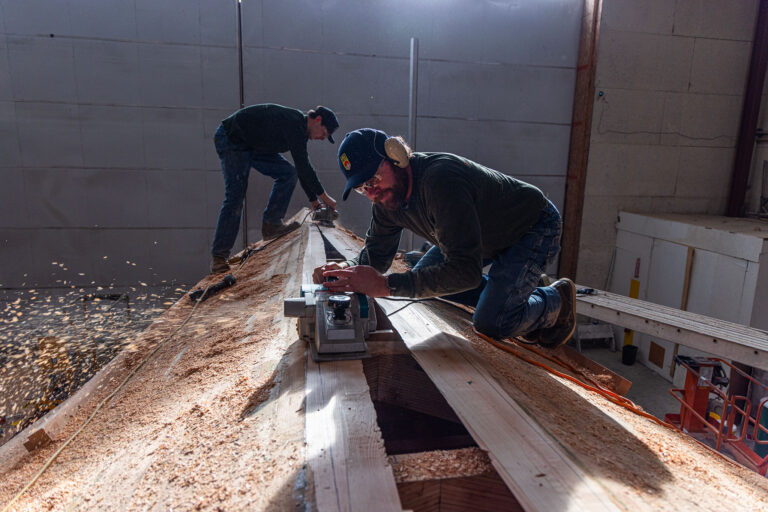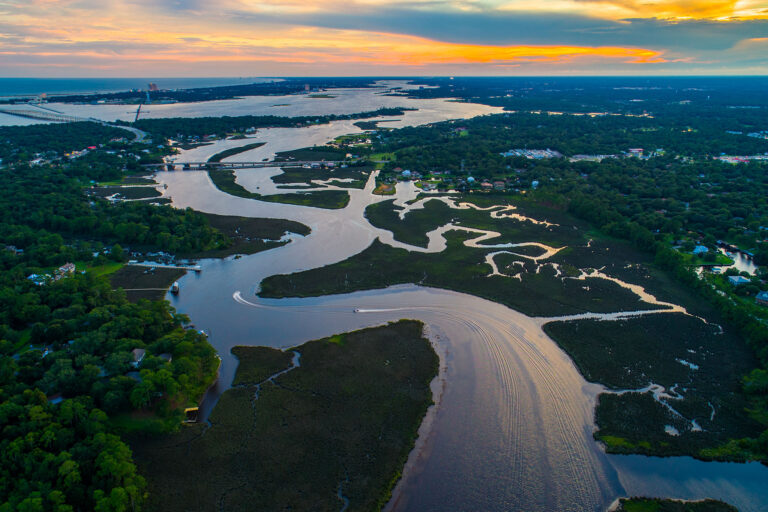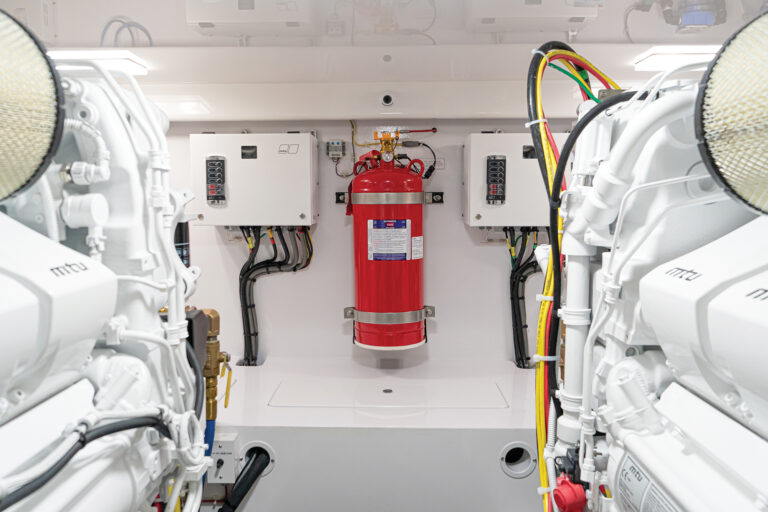The 14-footer that took a teenager and his dog on summer adventures was a steppingstone to adulthood
The 14-footer that took a teenager and his dog on summer adventures was a steppingstone to adulthood
Home front 1943: The U-Boats have retreated from the Gulf.
The boat cost $65, as is. Her hollow spruce mast stole my heart, and I could picture it carrying her Marconi rig aloft. She had a lot of sheer, good honest lines, and looked a little like a dory. Her 14-foot pine frame was covered with marine plywood. The canvas deck was a mess, and her sails were in awful condition, but I was determined to make this little boat a part of my life.
The old man wasn’t hard to convince. He was employed now and was recovering from the loss of his contracting business during the Great Depression. The boat was in the back yard of a home in south Tampa, Fla. We closed the deal with the lady of the house, and she loaned us a battered old trailer to tote my prize to Lightner’s fish camp on a canal that emptied into Old Tampa Bay.
I was 13 years old and had been afloat on the usually deserted and nearly pristine bay as much as school, Scouts and Mom would allow. My first boat defied nautical description. I built it in 1941 from cheap wood construction laths and covered it with sugar sacks donated by the local bakery. The boat was fairly watertight, thanks to numerous coats of house paint. My concerned parents limited my early deployments to very near-shore waters. I swore I’d wear my yellow Mae West life jacket.
Constant groundings on many oyster bars took a toll on the fragile bottom of my sugar-sack craft, so Pop agreed to replace it with my second boat, a 10-foot cypress skiff. I equipped this boat with a jury-rigged sail sewn by my mother between prayers for my brother, who was flying ammo to the Marines fighting on Guadalcanal. The skiff went fairly well downwind, but because she had no keel or centerboard she was a rowboat to windward. I learned about tides in the skiff when I was trapped against a bridge in a strong ebb.
This new boat promised more advanced and exciting sailing adventures. Yard work started immediately. My experience was limited to sugar-sack construction, but I got technical advice from Mr. Lightner, an ex-second class Navy machinist mate. I stripped the old canvas from the deck and removed the half-round rubrails from the sides. I bought a good piece of canvas to cover the deck. The trick was to cut out the opening for the cockpit so that a single piece fit snugly around the coaming with enough material to drape over the sides and reach the bow and stern. The canvas was held in place with tacks. The deck was sprinkled liberally with water, and the hot sun shrank it and stretched it tight.
After refastening the rubrails and cockpit quarter-rounds, the excess material was trimmed. A light coat of paint finished the job, but not too much or the canvas would lose its non-skid texture. The bottom was covered with expensive antifouling paint to ward off the dreaded teredo worms so common in Southern waters. I made a deal with an awning shop for a set of unbleached sails for about $30. The owner used the old set as a pattern.
By fall we were ready for sea trials. My steadfast friend Billy Phillips served as crew, and we purchased yachting caps at a local marine supply store to celebrate the occasion. We had a fine time, even though our voyage wasn’t very long. We tacked back and forth in Lightner’s Canal. The little boat performed well considering my limited skill.
It was time to name the boat. I had a fixation on the China coast because of tales my Uncle John told me about the Yangtze patrol, Mr. Lightner’s stories about Shanghai, and my favorite cartoon, “Terry and the Pirates.” I had read an article about a small sloop named Confucius, designed by a young couple who sailed it from California to Hawaii, arriving in time for the Pearl Harbor raid. I wanted a Chinese name, and the ancient philosopher’s sounded right. My 14-foot sloop became Confucius, and Old Tampa Bay was my South China Sea. I made a log from a small blue notebook, and my mother sewed a blue house flag with a yellow, Chinese-looking “C.”
In the spring of 1944 my brother, Jack, came home on leave from the South Pacific, not long after I had almost drowned his wife. The incident occurred when I made the mistake of tying down the mainsheet. A sudden strong gust of wind knocked the boat down, and Peggy was trapped under the port shrouds. She drank a lot of bay water. My self-respect suffered, but I learned a valuable lesson. Fortunately we were over a sandbar and were able to right the boat, retrieve the floating equipment, take the sails down and bail her out. Peggy lost interest in sailing.
As summer progressed I ventured farther past the old, decaying dredge by the mouth of Lightner’s Canal. I kept a sharp eye peeled for the 10-foot hammerhead shark we had named “Hitler.” He sometimes cruised that part of the bay. My dog, Pal, had been with me since I was 3 years old and was enlisted as my new sailing partner. He was an old, yellow mixed-breed, not very handsome but fiercely loyal. He would do anything for me. Old Tampa Bay was fringed with mangroves in those days, and the water usually was crystal clear. Great spotted eagle rays — we called them leopard rays — came into the bay during the summer, and sometimes we’d see them on the sandy bottom. Pal developed an eye for the big bottom-feeders. He barked whenever he saw one from his lookout position on the bow. He pointed rays like a bird dog. I had enjoyed Moby Dick, so I mentally substituted the great rays for the great whale. I talked my old man into making an iron “harpoon” in the shop at Drew Field, where he was the new superintendent of post engineers.
Pal pointed a lot of rays, and I hurled that harpoon until my arm ached. One fateful day we drifted, nearly becalmed, in about 6 feet of moonshine-clear water. My old, yellow dog set to sounding off, waking me from a heat-induced stupor. There on the bottom was a leopard ray at least 6 feet across. We’d never seen one in water this shallow. I took my time with the harpoon, holding the forestay with my left hand and making sure I had a good position on the foredeck. I let go with a mighty heave, backed by my 115-pound body. There was a great flurry of water. I had struck the beast! We went for a short but memorable “Nantucket sleigh ride” before the puny tip of the harpoon pulled out.
I was more confident in my ability to handle Confucius in tight circumstances after surviving a few line squalls by getting the canvas down expeditiously and the hook out with plenty of scope. It was miserable being soaked by rain though, so I built a plywood shelter to fit over the forward half of the cockpit. This also would house my Boy Scout Sterno stove in a small sandbox. Mr. Lightner said the old sailors called it a “caboose.”
I got a decent camber in the roof and cut two nearly perfect round portholes. Confucius was ready for cruising. It would be a bit tight in the cockpit, but my skinny frame didn’t need much room. And Pal was satisfied. He would perch on top of the caboose when we ran downwind.
The first hurdle was to convince my mom that Pal and a good anchor were all I needed for safety on an overnight cruise. Mom had a basic fear of salt water and kept harping about a 14-year-old in a boat at night with no means of communicating. Pop was neutral. I wore her down with arguments that the whole world was dangerous now and that I wasn’t likely to encounter any U-boats in TampaBay. She finally gave in after assurances from Mr. Lightner that I was a competent mariner.
Pal and I got under way on a sweltering Florida summer day. Thankfully, there was a moderate westerly breeze. Off we went on a port tack, sails drawing fair. My overnight port-of-call was HellHarbor, the crumbling remains of a 1930 movie set with the same name, starring Lupe Velez. HellHarbor was on Rocky Point about 3-1/3 nautical miles from Lightner’s canal. The distance sounds trivial today, but it was a challenge to us. Back then there were no bridges spanning that part of the bay. The only hazards to navigation on my track were oyster bars and some rotted old pilings off the point. The bay seemed unbelievably wide.
We brought the harpoon along for defense against any “cutthroats” who might be lurking about in HellHarbor. There was little boat traffic; I could sail all day and not see a soul. We made our landfall in about two hours, having deviated offshore a bit to catch the wind abaft the beam. HellHarbor was deserted. The old tower had crumbled, and the wood-and-plaster buildings were falling apart. Most of the palmetto roofs had blown away.
Pal and I patrolled the rundown village, armed with a Scout knife and the harpoon. It was spooky, but at least it was daylight. There were no cutthroats. We’d planned to be anchored offshore by nightfall. Swatting more than a few mosquitoes, we managed to eat our sandwiches on the beach. Pal peed on everything in sight.
By sunset, we were safely anchored about 50 yards off the point and clear of most of the swarming pests. Dinner for all hands was canned stew. After pacing from bow to stern and over the top of the caboose, Pal finally settled down. The stars were a spectacle of diamonds. There were no shore lights. Now and again a single car crossed a causeway in the distance. Fatigue took over, and I lay in my narrow berth, listening to the gentle brush of the wavelets against the bottom.
Smack! My slumber was shattered by what had to be a truck landing in the water. Pal came unhinged and barked frantically. I bolted upright, cracking my skull against the low cabin overhead. I was scared stiff. I checked around and made sure the boat was OK. My flashlight cast a weak beam over the water. There was a large swirl about 10 yards away. What had fallen from the sky? If that was an airplane it must have been a noiseless glider, because I hadn’t heard engine sounds. A few minutes later, as I looked toward the lighter horizon of the open bay, I saw a blurred shape explode from the water. It hung suspended in the air, then crashed to the surface with the same loud smack. The great spotted rays had taken their revenge on the harpooners of the sloop Confucius.
I got more involved in Sea Scouting in 1944 with the added attraction of a Navy-type uniform and harbor patrols with the Coast Guard Reserve (Temporary). These endeavors required my presence in and around the port of Tampa and on HillsboroughBay. Training was included on the Chesapeake Bay bugeye Blue Dawn and lifeboats from the merchantman Exeter, which had been sunk by a U-boat. In 1945 I moved Confucius to the Tampa Yacht Club next to the Sea Scout base at Ballast Point. Confucius was back where I had found her. She went mostly unused because of other priorities and my focused effort to complete the requirements for quartermasterSea Scout.
I took the little sloop out for the last time in 1946 and made a run in front of a typical line squall that came roaring out of the southeast late on summer afternoons. I was coming home wing and wing at a record speed. Suddenly my beautiful hollow mast carried away at the spreader. My friend was hurt. A Sea Scout motor launch towed me in. I later sold the boat “as is.”
Confucius was a critical step in my passage to adulthood. I learned lessons aboard her that helped me survive years at sea in the Merchant Service, the Navy and deployments aboard government research vessels and Coast Guard cutters.
Charlie Fuss has come full-circle back to his roots in TampaBay. After Confucius came the Sea Scouts, the Merchant Marine on a Victory ship, the U.S. Navy, college and 31 years with the National Oceanic and Atmospheric Administration, ending in a White House detail. He now volunteers aboard the SS American Victory museum ship and teaches his numerous grandchildren to sail his classic Maine-built Melonseed named after his wife, Carol Ann. Fuss hopes to instill some of the skills and knowledge he gained sailing Confucius in his crew.

